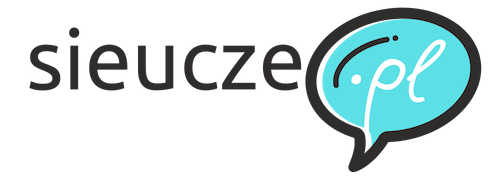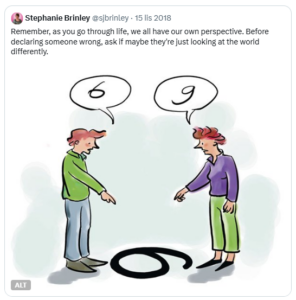10-minute read, April 2025
By Aleksandra Parus
Understanding Different Perspectives: A Key to Effective Communication
Have you ever listened to someone’s take on a meeting you both attended and thought, “Wait, were we even in the same room?”
Their version sounds so different, you start to question your memory.
What are they talking about? That’s not how it went at all… right?
Or maybe you and a colleague received the same instructions from your manager, but once you start working, your paths split entirely.
You glance over and think, “Why are they doing that? That’s definitely not what the boss meant!”
It seems obvious that we all experience things through our own lens. You might even say, “Well, of course everyone sees reality differently.”
But when we slow down and really notice those differences, it’s surprising just how big they can be.
There’s a well-known image floating around the internet that illustrates this perfectly. Two people stand facing each other, looking at a number drawn on the ground.
One sees a 6.
The other sees a 9.
Neither is wrong. They’re just looking at the same thing from two different sides.
Now imagine someone who’s never learned Arabic numerals looking at the same drawing. To them, it’s just a meaningless squiggle.
The way we see the world is shaped by so many things—what we know, what we’ve been through, what we care about, what we need at that moment. Even our mood plays a role.
So back to the two people and the number on the ground.
What could help them understand each other better?
Simple, right? One of them could just walk around to the other side and take a look.
But in real life, it’s not quite that easy. We can’t just step into someone else’s shoes or take over their point of view.
In training sessions, I often give participants role play tasks based on the same situation—but told from two different perspectives.
And guess what? It’s really easy to end up in conflict.
But that’s not the point. The goal is to find understanding. To build a bridge. To reach some kind of common ground.
After the exercise, people often say, “It would’ve been so much easier if we could’ve just read both versions from the start.”
Exactly. Like those two people standing over the number—if only they could see both views in front of them.
But life doesn’t hand us cards like that.
You simply can’t slide someone a neat little cheat sheet, listing all your thoughts, emotions, needs, and hopes.
And they can’t do that for you either.
You can’t read someone’s mind.
You don’t know what they think about the situation, or how your actions made them feel.
You don’t know what they’re hoping for from this conversation. Or what their true intentions are.
Sometimes, in those role plays, someone blurts out, “Why didn’t you just say that’s how you felt? I had no idea!”
And the reply often goes something like:
– “I didn’t think it mattered.”
– “I didn’t know how to say it.”
– “I was too overwhelmed.”
– “I didn’t want to seem weak.”
Sounds familiar?
If we want to truly connect with others, we need to understand their side first. And that starts with simple, sincere questions:
💬 “How do you see it?”
💬 “What’s important to you in this situation?”
💬 “What feels hardest right now?”
💬 “What do you need from me?”
💬 “How can I help?”
And then—really listen.
And if you’re still unsure, ask again.
💬 “What’s making you feel this way?”
💬 “Why does this matter to you?”
When someone feels truly seen and heard, something shifts.
They stop defending, stop preparing their attack.
And instead… they start listening to you, too.
With curiosity.
With openness.
With a genuine desire to understand.
about the author:
Aleksandra Parus – psychologist, trainer, and coach specialized in interpersonal communication with extensive experience conducting training sessions on diverse interpersonal and management competencies. Passionate about observing individual transformation and personal development. Holds 14 years of dedicated involvement in the business sector.
Contact her HERE
Ready to pracitce some vocabulary form the article?
Photo by Ashkan Forouzani on Unsplash





